One of the hottest segments in America is the family 3-row SUV, which has been exploding with new and highly competitive products for the past few years. One of those newer products is the Hyundai Palisade, which has been making waves, but one of the nameplates that’s been around for a long time is the Honda Pilot, which was also just fully redesigned. So, should you choose in the 2024 Honda Pilot vs. Hyundai Palisade battle? Let’s go ahead and find out!
Pricing and Equipment
Like always, let’s dive quickly into the pricing of these two family SUVs to start.
Beginning with the value-packed Palisade, this is the fully loaded Calligraphy trim level with the new Night Edition for 2024. All told, we’re sitting a touch over 55 grand when you check every box.
MSRP (Calligraphy Night Edition AWD): $53,600 | Options: $215 | Destination: $1,335 | Total: $55,150
While Honda’s typically ring in more expensive than an equivalent Hyundai, this fully loaded Pilot Elite trim level actually stickers in about a thousand less than the Palisade, at $54,310. Honda should eventually bring back the Black Edition model at the tip-top of the lineup, but for now, it’s only offered in Canada.
MSRP (Elite AWD): $52,480 | Options: $455 | Destination: $1,375 | Total: $54,310
If you want to get the best price from local dealerships and access to invoice pricing info for these two models or any vehicle, we have a tool on our website to do just that. Check here for more info.
Now as far as this comparison, it will be conducted objectively. We have done our best to weigh the points awarded throughout in major and minor categories, but at the end of the comparison we will sum up with our thoughts and revisit the small price difference for a value assessment. Let’s get into it!
Exterior Design
So, starting out the exterior, these two family haulers definitely have a little more spice than the average SUV. The Pilot was completely redesigned last year giving it the squared off and boxy shape Americans love, and the Palisade also has a boxier grille after its heavy refresh last year as well.
Like I already mentioned, new for 2024, Hyundai added this blacked out Night Edition for a stealthy look, [p] and moving over to the lighting, they both have LED arrangements. They are not created equal, though, since the Palisade features a higher-end projector LED setup compared to the Pilot’s reflector LEDs, BUT, only the Pilot is including LED fog lamps.
Moving on to the sides, you’ll notice that these two are certainly not small SUVs. They are nearly 200 inches long, and as you might expect, this translates to a lot of interior space which we’ll explore shortly. Until then, for wheels, they’re both rocking stylish and large 20-inch options with completely different finishes.
Length: 199.9-in (Pilot) | 196.7-in (Palisade)
Around back, both have handsome designs, and as far as features are concerned, they are similar. Both have exposed exhausts, exposed rear wipers, and LED brake lights. The Palisade adds an LED turn signal to the mix, though neither of them have LED reverse lighting.
Additional Features
Now it’s time for some individual features and the first place we’re stopping is the mirrors. Both mirrors are loaded to the gills with features like auto-dimming, however, the Palisade is missing the power folding that the Pilot has.
Now in addition to the blind spot monitoring systems built into the mirrors, both Hyundai and Honda give you their entire suites of active safety systems as standard equipment. One cool Hyundai advantage is the smart parking system, which can pull into and out of tight parking spots unmanned.
Warranties are another area where the Hyundai shines. The Palisade includes a longer basic and powertrain warranty, plus gives you an additional year of complimentary maintenance.
For those of you that like to tow, both the Pilot and Palisade are rated to handle 5,000 pounds.
But we all know the interiors are the most important part about family SUVs, so let’s check that out.
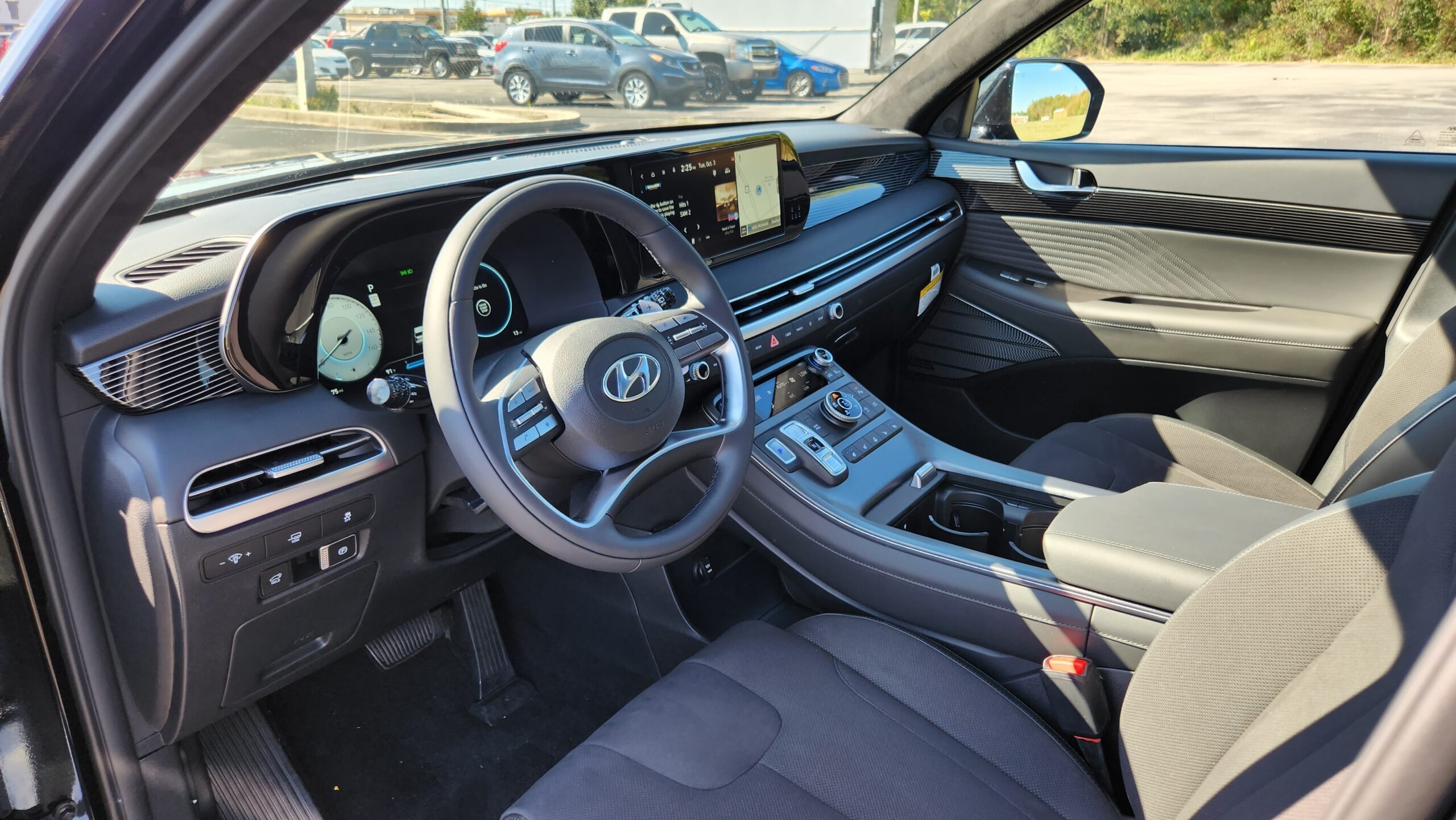

Interior Design
So walking up to the vehicles, both models have smart entry systems, remote start built into the fobs, however, only the Hyundai has phone-as-key ability.
And wow, once you open up the doors, you’ll begin to see why these top trim levels demand an over $50,000 price tag. Both are finished with top notch materials, loads of technology, and if the badges were covered up, don’t seem like mainstream SUVs.
But one of the nicest pieces inside the cabin are the seats. The Pilot has upscale real leather with piping, and the Night Edition of the Palisade substitutes out the normal Calligraphy nappa leather for a suede insert instead.
Moving past that, both seats are heated, ventilated, and have memory functions. However, the Palisade goes a bit further with 14-way power adjustment, instead of 10 on the Pilot, and it even includes power massage.
Now once fully inside the cabins, you can begin to take in how nicely appointed they are. One does shine a bit brighter than the other when it comes to material quality, however, and that’s the Hyundai. Honda took a more pragmatic approach to the interior while the Hyundai went the extra mile when it comes to luxury. The Palisade uses quilted leather on the door trim, metal speaker grilles, leather on the center tunnel and even a fancy suede headliner. This makes it feel closer to the Acura MDX.
After startup, you’ll see two fully digital gauge clusters. The Palisade’s is going to be about 20 percent larger though, at 12.3 inches instead of 10 inches on the Pilot, and it also includes a cool blind spot camera system, a technology that Honda actually pioneered but has since abandoned.
If you don’t want to look at the gauges, both have large and functional head up displays, and pushing back, cold hands are a thing of the past with heated, leather wrapped steering wheels and rain sensing wipers.
Storage and Technology
Now one of the most important aspects of a family 3-row is the storage and both models shine here. For our Car Confections donut test, both models fit well over a dozen donuts which passes our Car Confections donut test, and while the Pilot’s center console is larger, the Palisade has another bin that can be used for both cupholders AND storage in front of that. The back and forth continues with passthrough storage under the console in the Hyundai, and a useful passenger storage shelf in the Honda.
Text: both have wireless phone charging pads
One of the reasons these can have so much storage is because of their electronic shifters. Operation is very similar, and once in reverse you’ll find 360 degree cameras for these top models.
Climate controls are done the traditional way with physical buttons for their 3-zone systems, and now that takes us to the nearby volume knobs. The Pilot Elite gets the upgraded Bose audio system, and the Hyundai a Harmon Kardon system, so let’s take a sample of both. Overall, the Palisade’s system has the richer and more balanced sound quality.
And now that brings us to the infotainment systems and displays. This is one area where the Honda has gotten some criticism for the new generation with its 9-inch display instead of the 12-inch one in the new Accord. If it had that larger option, then the Hyundai wouldn’t have the 30% screen real estate advantage that it does.
But the Palisade is lacking a big feature that many owners are looking for. While it does have wired Apple CarPlay and Android Auto functionality, only the Pilot has wireless ability.
As far as other features, both have integrated navigation systems and passenger intercom systems, and then past that, we have auto dimming rearview mirrors with HomeLink garage door openers. Only the Palisade is also a smart camera mirror, and while both feature large moonroofs, only the Pilot has the more expansive single piece pano roof.
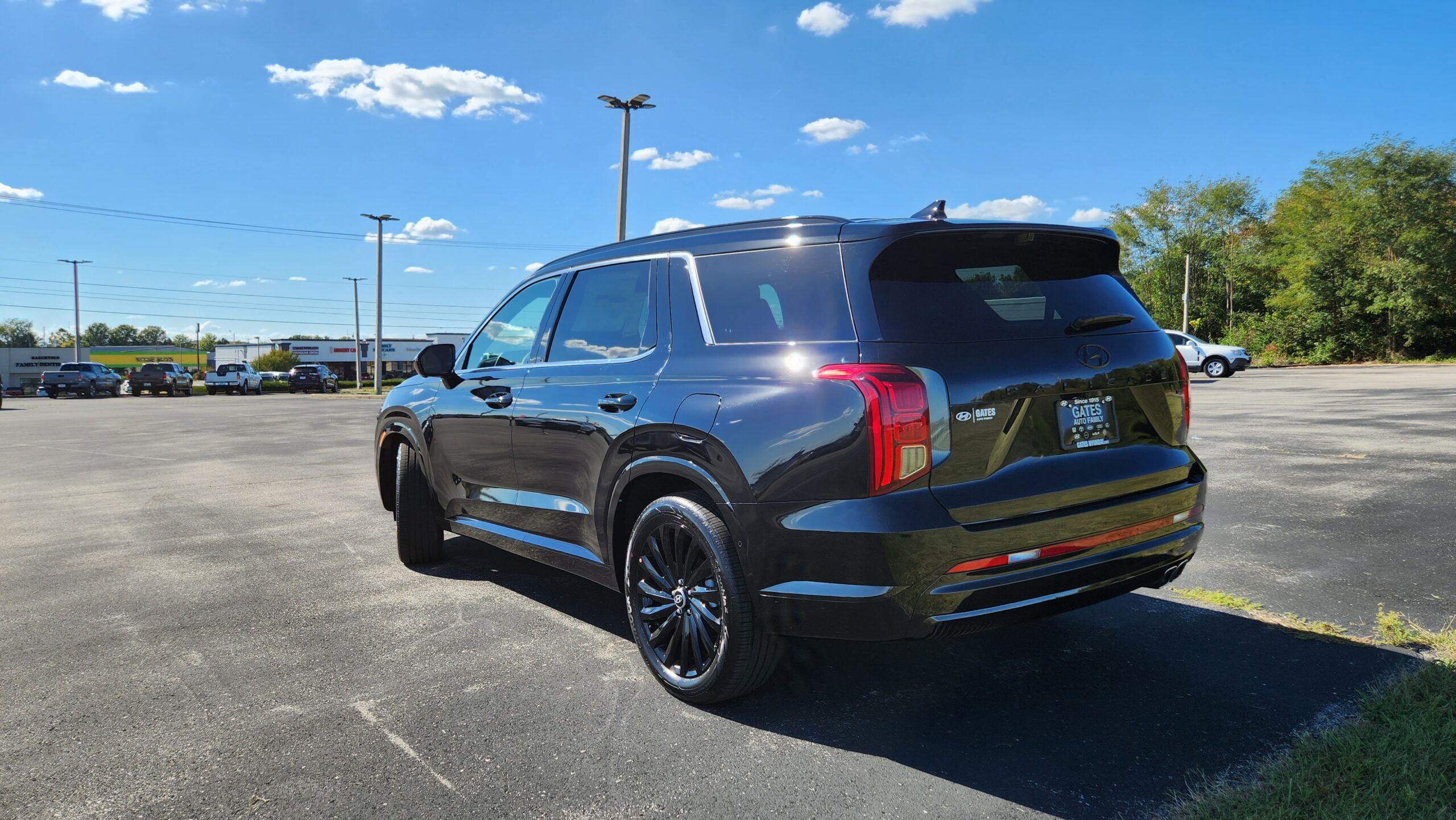
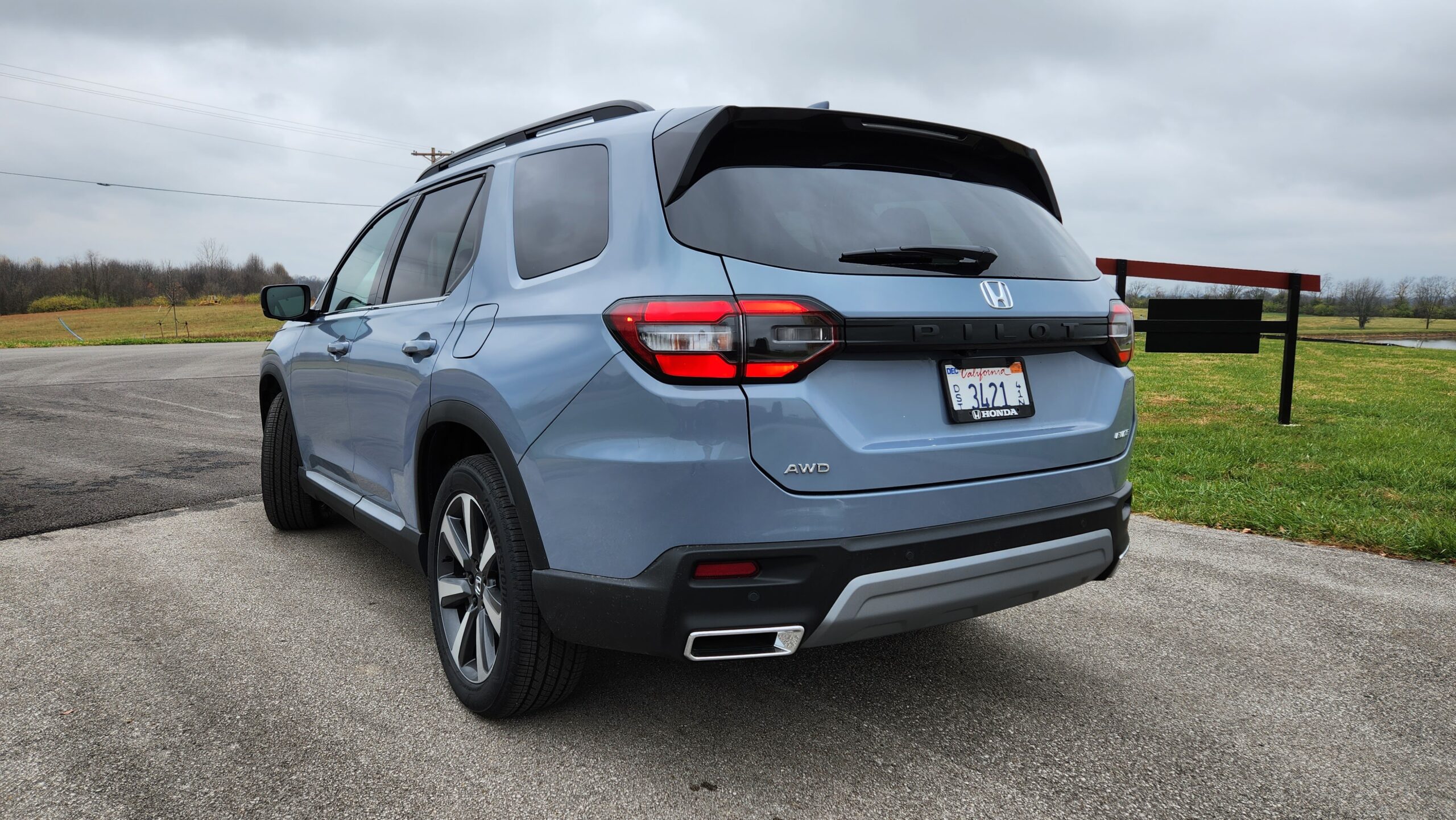
Rear Seats and Cargo
Alright, now it’s time to dig into the equally important rear seats and cargo areas. Starting with the 2nd row measurements, both are impressively spacious. The Palisade doesn’t have enough of an advantage to score a point with about 4% more legroom, and they have identical headroom figures.
Pilot: Legroom: 40.8-inches | Headroom: 40.2-inches
Palisade: Legroom: 42.4-inches | Headroom: 40.2-inches
But it’s not ALL about space. Your family is going to want some features in the rear and indeed the two deliver and have advantages over one another. Starting with the similarities, both have sunshades, rear climate controls, 2 charging USB ports, heated rear seats, and a household outlet. Now on to the differences. The Palisade Calligraphy is one of the only mainstream vehicles to have ventilated second row seats, and the Pilot has a cool center seat that allows for on-demand 7 or 8 passenger seating, fold down center console, and can even be stowed under the floor in the cargo area. Most competitors, including Palisade, don’t offer 8-passenger seating on top trims.
Moving on to the 3rd row of seats, they make it quite easy to enter with one-press folding and sliding mechanisms. These two are some of the best offerings in the class for third row space, and their leg and headroom figures are within 5% of each other. Thy support is also excellent for children and smaller adults.
Pilot: Legroom: 32.5-inches | Headroom: 38.1-inches
Palisade: Legroom: 31.4-inches | Headroom: 37.8-inches
Once inside, they have good amenities with USB ports and vents on both. However, as you might realize by now, the Palisade goes above and beyond when it comes to luxury and is including heated third row seats, a class exclusive feature.
Now it’s time to head into the cargo areas and see how much stuff you can bring along with all the people. Once again, these two excel and are some of the biggest options you can get. They have cargo figures that closely mirror each other, including at the maximum capacity, although the Pilot does have a 5.7% advantage behind the second-row seats.
Pilot: 3rd Row: 18.6 cu.ft | 2nd Row: 48.5 cu.ft | MAX: 87.0 cu.ft
Palisade: 18.0 cubic feet behind 3rd row | 45.8 cubic feet behind 2nd row | 86.4 cubic feet max
The Hyundai fights back, though, with a power folding third row, something not currently offered on the Pilot.
Alrighty, so that it for the interiors, but now let’s take this fight to the streets!
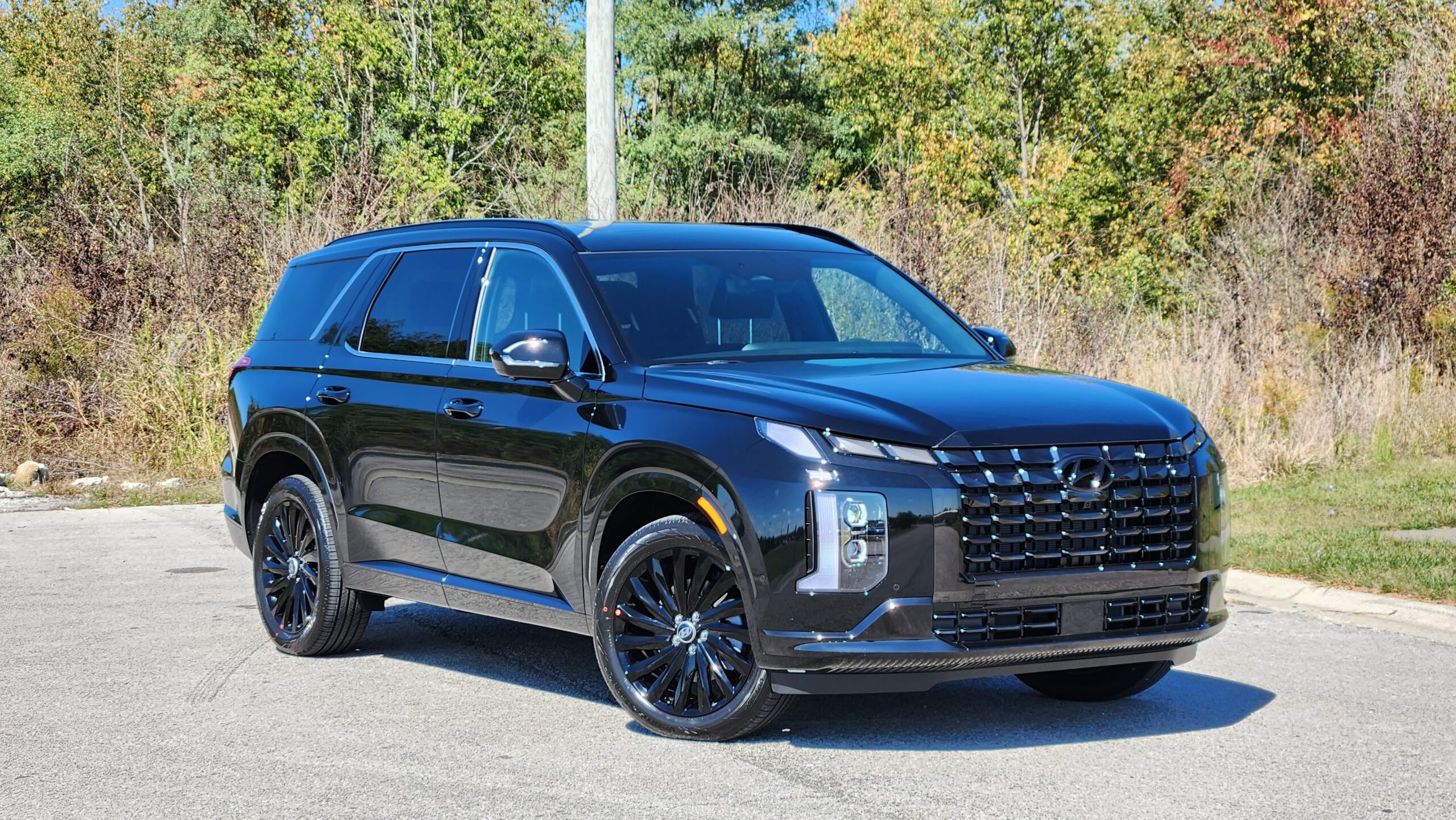

Powertrains
In this segment, it’s becoming increasingly common to use turbocharged 4-cylinder engines under the hood. However, once you start talking about the powertrains of these two, you’ll realize they are more classic in this regard. Both are using naturally aspirated V6s with nearly identical power figures. As you might expect, that means accelerations between these two are nearly identical and they have smooth refined V6 growls.
Pilot: 3.5L V-6: 285 hp and 262 lb. ft. of torque
Palisade: 3.8L V-6: 291 hp | 262 lb.ft
Moving past that, they have smooth and nice responding transmissions; 8 and 10 speeds in the Palisade and Pilot respectively. Additionally, for these top models, AWD is standard equipment.
Test Drive and Fuel Economy
While not a focus, I do want to point out that these two drive smaller than they actually are, especially the Pilot since its steering is quite accurate feeling like the typical Honda.
What IS a focus in this segment is ride quality. Outside of 6-figure luxury SUVs, the ride quality is unmatched and these two will certainly be models you can take on multi-hour road trips with no exhaustion whatsoever. We say that from experience since we did take both of them on long road trips.
But one big element of a nice road trip car is to have serene environments free of loud noises, so let’s talk about that. Here at Car Confections, we always test the dB sound level readings of all the vehicles we test, and these two both scored luxury-like ratings of 55 at 55 MPH.
Palisade: 55.6 dB
Pilot: 55.4 dB
And finally, for fuel economy, both are rocking the same 21 MPG combined in their all-wheel-drive forms. While there is no difference in the EPA ratings, our observed fuel economy over a week of testing, indicated that the Palisade performs better in the real world by about 2 MPG. Neither of them off hybrid or plug-in hybrid variants currently to improve MPG’s.
Palisade AWD: 19/24/21 MPG | Observed: 21.4 MPG
Pilot AWD: 19/25/21 MPG | Observed: 19.2 MPG
2024 Honda Pilot vs. Hyundai Palisade winner!
Well, that’s it for another 3-row family SUV smackdown comparison! The Hyundai Palisade is hard to beat when it comes to the sheer number of features and luxury they can pack in for the price, but the Pilot’s practicality is a lethal weapon in this segment as well. Let’s summarize and discuss who should be your personal winner.
Palisade:
- Most luxurious cabin in the segment
- Third row features (power-fold and heating)
- Technology advantages
Pilot:
- The assurance of the Honda badge (RELIABILITY – MENTION FOR THE HATERZ)
- Versatility of 7 or 8 passenger seating on loaded Elite
- Power-folding mirrors
Now we want to know your opinions, so make sure to head to the comment section and let us know which one you would pick! Thanks for joining us for another Car Confections comparison! Be sure to watch the full video below for all the details!
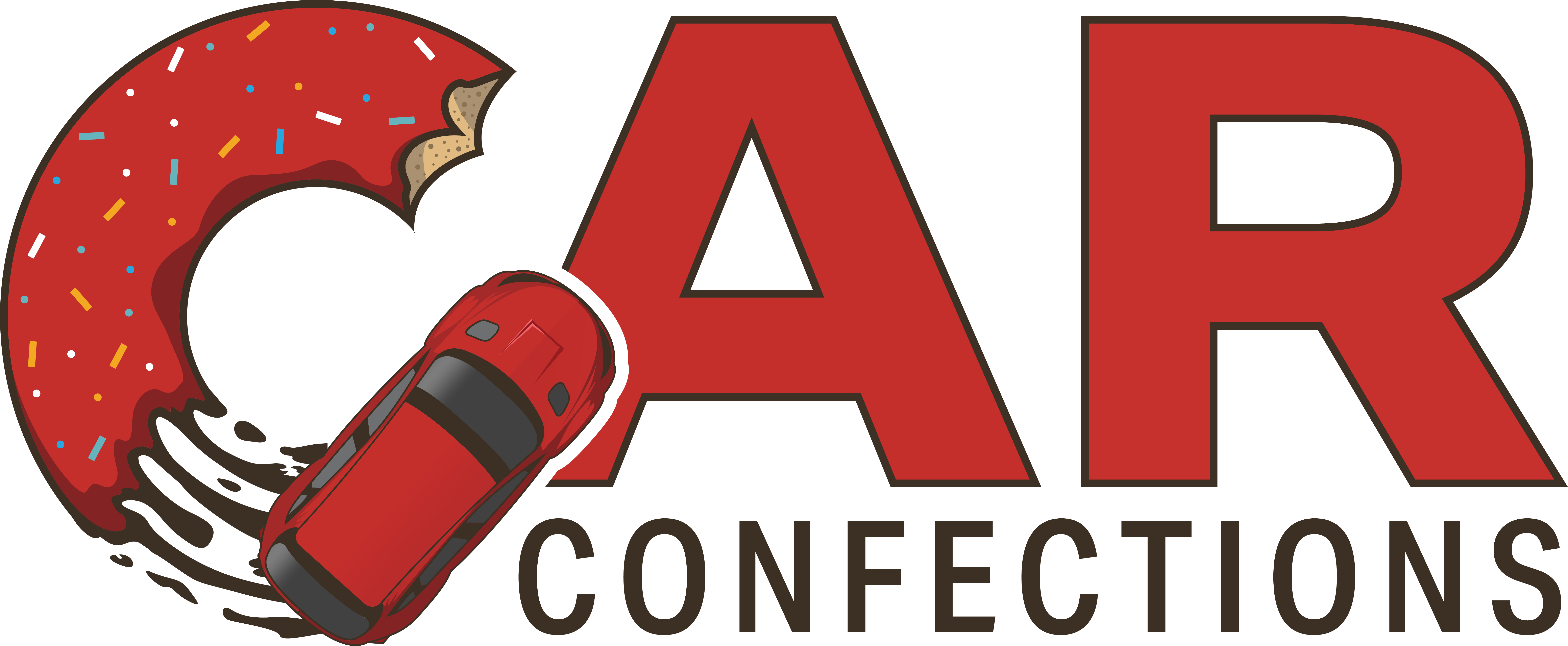
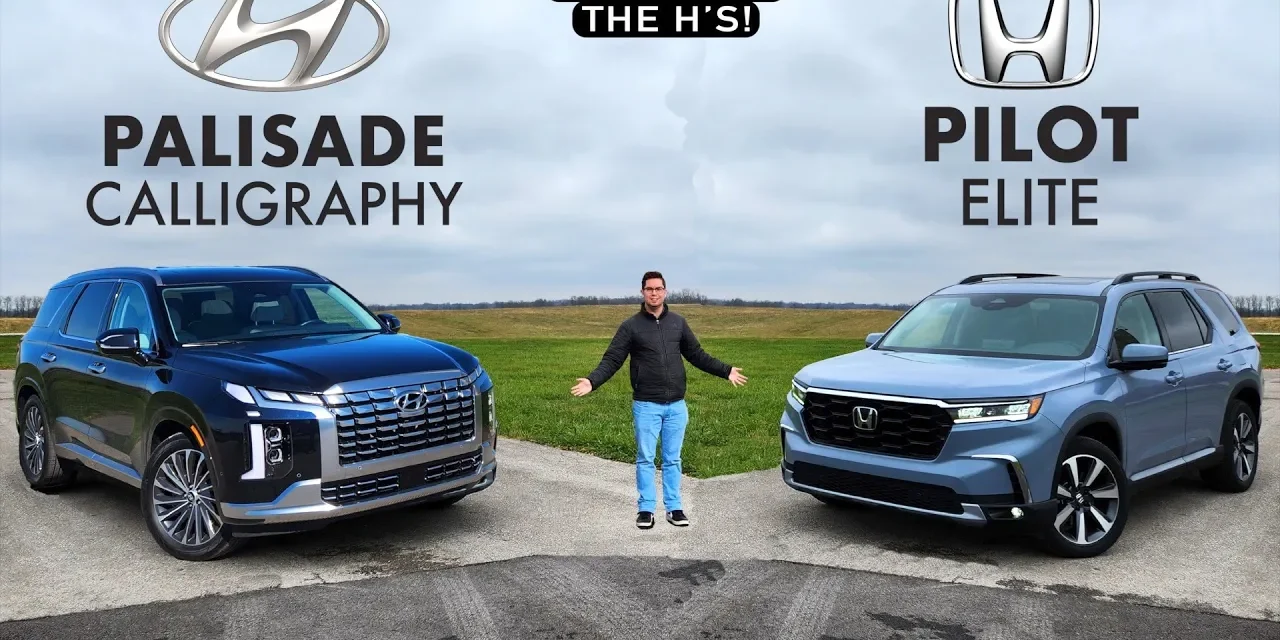
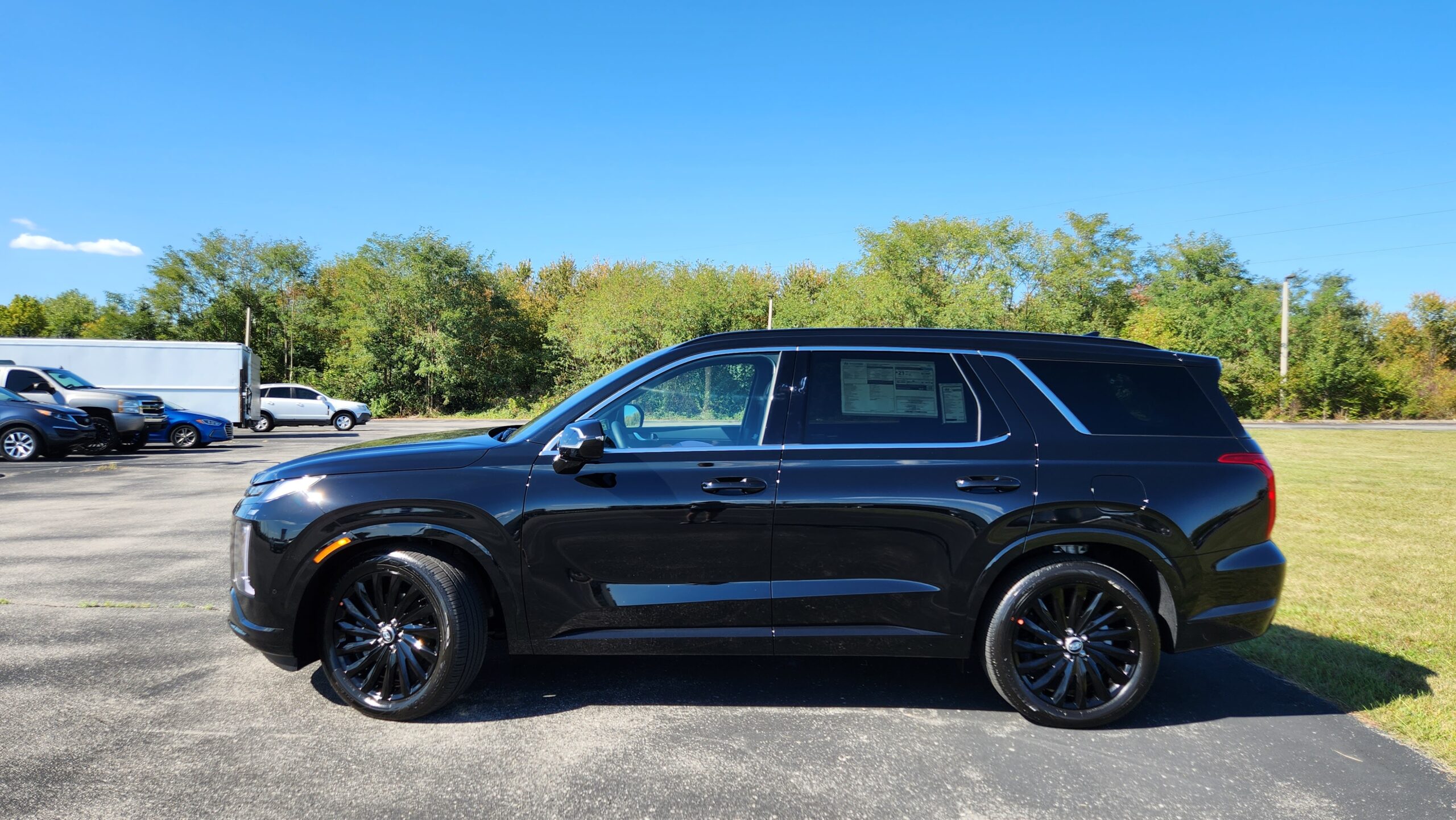



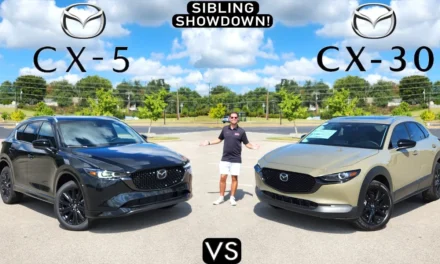
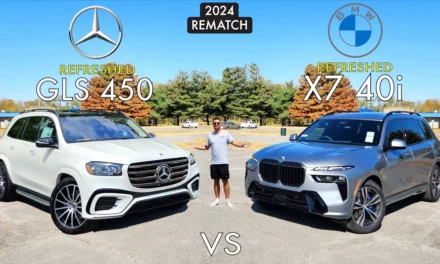






Congratulations on a great article!!
I just emailed car & driver yesterday about their reviews and lack of real content when reviewing SUV’s.
Thanks so much! We appreciate the support!